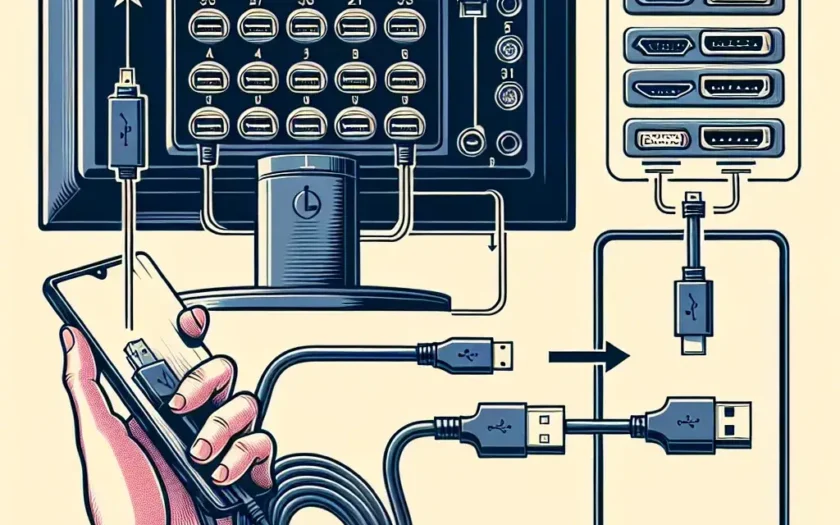Introduction
In today’s modern world, the ability to connect your smartphone to an LED monitor can significantly enhance your digital experience. Whether you’re looking to watch movies, play games, or even conduct professional presentations, this functionality can come in very handy. In this article, we’ll walk you through various methods and steps to connect an LED monitor to a smartphone.
Equipment and Requirements
First, let’s outline some necessary equipment and requirements:
- LED Monitor
- Smartphone
- Connection Cables (HDMI, USB-C, etc.)
- Adapters (if needed)
- Apps and Software (for wireless connections)
| Method | Cable/Adapter Needed | Software Needed |
|---|---|---|
| HDMI | HDMI to Micro HDMI/HDMI to USB-C Adapter | None |
| USB-C | USB-C to HDMI Cable | None |
| Miracast | Miracast Adapter | Miracast App |
| Chromecast | Chromecast Device | Google Home App |
Method 1: HDMI Connection
Step-by-Step Guide
- Check the ports on both your LED monitor and smartphone. Ensure they have compatible HDMI ports (Micro HDMI, Mini HDMI, or HDMI).
- If your smartphone has a Micro HDMI port, an HDMI-to-Micro HDMI cable is required. For smartphones without an HDMI port, a USB-C to HDMI adapter is needed.
- Connect one end of the HDMI cable to the monitor and the other end to your smartphone.
- Switch your monitor to the correct HDMI input source using its remote or buttons.
- Your smartphone screen should now be mirrored on the LED monitor.
Method 2: USB-C Connection
Step-by-Step Guide
- Both your LED monitor and smartphone should support USB-C connections.
- Use a USB-C to HDMI cable for the connection.
- Connect the USB-C end of the cable to your smartphone and the HDMI end to the monitor.
- Change the monitor’s input source to HDMI.
- Your smartphone screen will appear on the LED monitor.
Method 3: Wireless Connection via Miracast
Step-by-Step Guide
- Ensure both devices support Miracast. If not, a Miracast adapter can be used.
- Plug the Miracast adapter into the HDMI port on the LED monitor and power it on.
- On your smartphone, navigate to the settings and select ‘Display.’
- Choose the ‘Wireless display’ option and enable it.
- Select the Miracast adapter from the list of available devices.
- The smartphone screen will be mirrored wirelessly to the LED monitor.
Method 4: Wireless Connection via Chromecast
Step-by-Step Guide
- Plug the Chromecast device into the HDMI port on your LED monitor and power it on.
- Download and install the Google Home app on your smartphone.
- Open the Google Home app and set up the Chromecast by following the on-screen instructions.
- Once set up, tap the ‘Cast Screen/Audio’ option in the app.
- Select your Chromecast device, and your smartphone screen will be mirrored to the LED monitor.
Troubleshooting Tips
What to do if you encounter issues
- Check all connections and make sure they are secure.
- Ensure that the correct input source is selected on the LED monitor.
- Update your smartphone’s software to the latest version.
- Restart both your smartphone and the LED monitor.
- Consult the user manuals for both the smartphone and the LED monitor for more guidance.
Conclusion
Connecting an LED monitor to your smartphone can elevate your viewing and productivity experience. By following the steps outlined in this article, you can achieve a seamless connection through different methods like HDMI, USB-C, Miracast, and Chromecast. Whether you prefer a wired or wireless setup, these options provide versatile ways to mirror your smartphone screen to an LED monitor.

